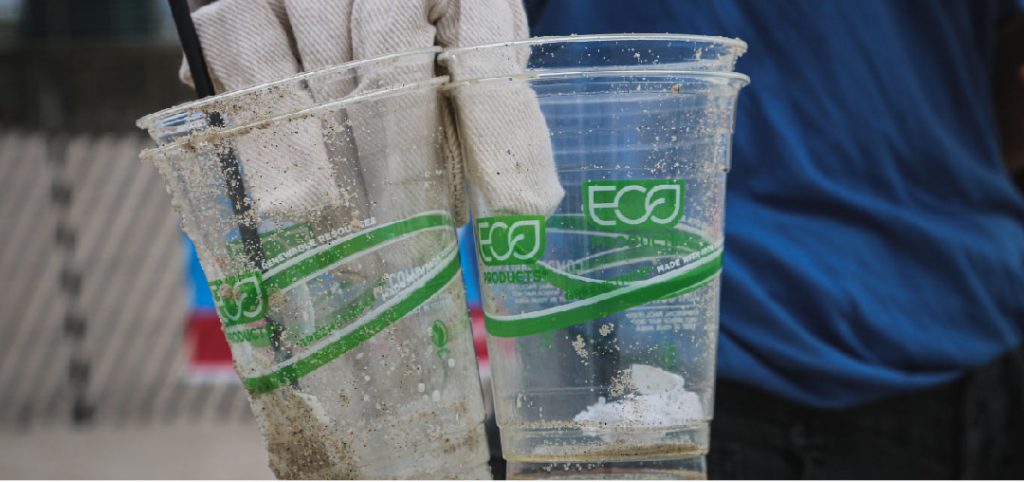
It’s easy to get caught up in clever marketing strategies with so many brands doing an outstanding job selling their goods, right?
But when an “eco-friendly brand” uses tactics to falsely promote the sustainability of a product through marketing, branding, and packaging—it’s a different story. This is called greenwashing.
Greenwashing occurs when a company markets their product or brand as “green” without doing the heavy lifting to ensure that it lives up to this claim.
An American environmentalist named Jay Westervelt coined the term in the 1980s after staying at a hotel where guests were asked to reuse the towels to save the environment. However, Westervelt soon noticed that the hotel wasn’t too keen in minimizing waste and improving their sustainability efforts for the rest of their hotel practices.
The hotel was merely attempting to cut costs by not having to wash as many towels, but they highlighted its environmental-friendliness instead.
This proves that greenwashing isn’t new. However, it’s even become more rampant these days. For its second report, TerraChoice uncovered 2,219 products making green claims in 2009. There was a 79% increase since the company’s first report in 2007. Additionally, 98% of these products are greenwashed.
According to study findings, consumers believe increasing brand credibility is one of the primary reasons companies resort to greenwashing marketing tactics.
It touched on the fact that some consumers are aware of greenwashing, and that this branding is supposed to make a company or their products more attractive to modern consumers.
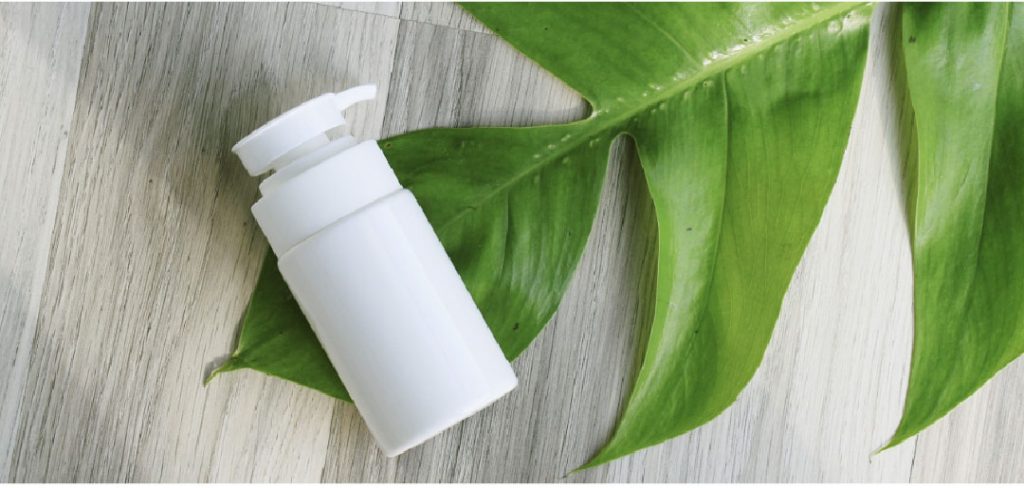
Other possible reasons include:
- Business or process innovation
- Improving company or brand image
- Opening new sources of revenue
- Gaining new market share
And in the wake of modern consumers being extremely aware of the environmental issues we’re currently facing, more companies are jumping on the greenwashing bandwagon. This marketing strategy is deceptive in itself, but the worst part is that it also undermines efforts to combat climate change.
Greenwashing is especially notorious in the cosmetic industry. In this article, we’re diving deep into misconceptions about clean beauty and “greenwashing”. Here’s what we’ll be discussing:
- How to spot greenwashing. Is your company committing one of the seven greenwashing sins? Here’s how you find out.
- How sustainable companies can avoid greenwashing. Become a legitimate sustainable beauty brand by following these tips.
- Greenwashing mindset: Are European cosmetics safer than those made in the US? This section touches on one of the most controversial greenwashing examples.
- A closer look: 10 ingredients banned in Europe but not in the US. Knowing these 10 ingredients can go a long way towards helping you to better market your beauty products.
Ready to get started? Let’s begin.

How to Spot Greenwashing
In the beauty industry, there’s a sudden rise of organic and natural products which can overwhelm modern shoppers.
Consumers may find it difficult to identify manifestations of greenwashing because of the variety of forms that it takes. The amount of conflicting information online can also make it difficult for customers to determine which products to buy and which to avoid.
We’ve listed the seven sins of greenwashing, as well as some greenwashing examples, so you can learn to spot them from a mile away.
1. Hidden Trade-Off
This has to be one of the most common strategies beauty brands use to convince a shopper they’re out to save Mother Earth. A hidden trade-off is when a company highlights the eco-friendliness of a product based on just a few attributes, undermining its environmental performance as a whole.
They label products as green based on a narrow set of features and characteristics while ignoring potentially more concerning production issues.
Let’s take bamboo viscose makeup remover pads, for example. Skincare products made of bamboo are often gentle on the skin. In terms of sustainability, bamboo doesn’t consume too much water, it’s carbon-neutral, and renewable since they grow rapidly. Not to mention, these pads are reusable. Score one for Mother Nature, right?
Well, not quite.
Producing bamboo viscose or rayon calls for the use of toxic chemicals. According to the Federal Trade Commission, this fiber is artificial and blends plant and tree cellulose with chemicals that cause hazardous air pollution.

2. No Set Standard for Claims
If a company claims that their product is sustainable but doesn’t have supporting research or third-party certification to back it up, it means they have no proof of claims.
Beauty brands should perform cosmetic claims substantiation simply because it’s a responsible move on their end. It helps them showcase product efficacy and innovation while strengthening brand reputation and helping customers make informed decisions.
Here are some tangible ways to back up cosmetics claims:
- Conducting consumer perception tests and questionnaires
- Referencing existing market data and scientific publications
- Conducting experimental studies
One classic example is when personal care products (such as shampoos, conditioners, and soap) state they weren’t tested on animals but do not provide any evidence to support this assertion.
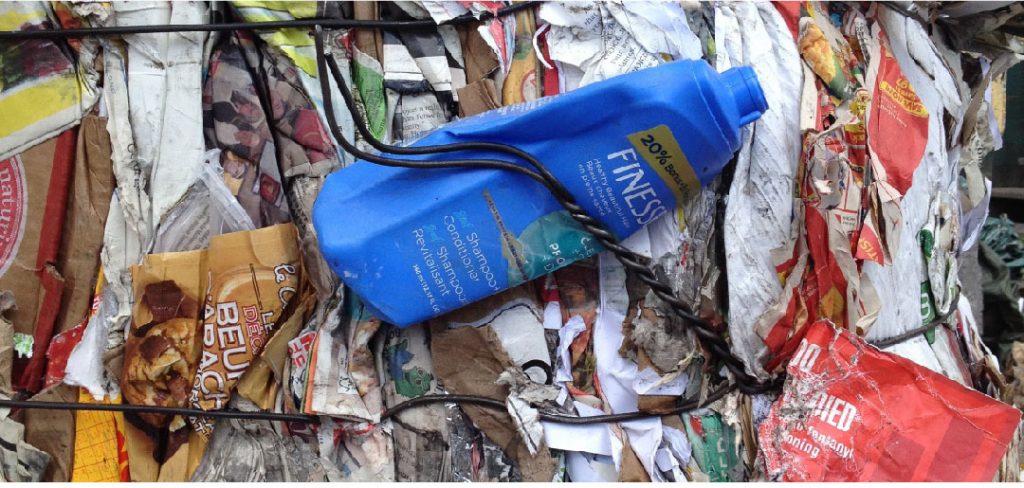
3. Deliberate Vagueness
Poorly defined or too broad terms can convince customers to purchase a product without knowing what they signed up for.
Vagueness is quite prevalent because the US Food and Drug Administration’s authority over claims on cosmetics does not extend to approval before they are marketed.
In 2016, the FTC reprimanded 4 companies for using the term “all-natural” to describe their “almost all-natural” products. All these personal care products contain at least one synthetic ingredient.
Another common example of deliberate vagueness includes adding labels, such as “non-toxic”. All things are toxic and potentially hazardous in specific amounts, even water and oxygen.
On the other hand, parabens have drawn flak for being “cancerous” based on research that is outside the scope of their use in skincare. For example, research based on extremely high concentrations when the concentrations in a product are miniscule. It’s a greenwashing strategy that causes people to believe American beauty brands don’t prioritize their customers’ safety.
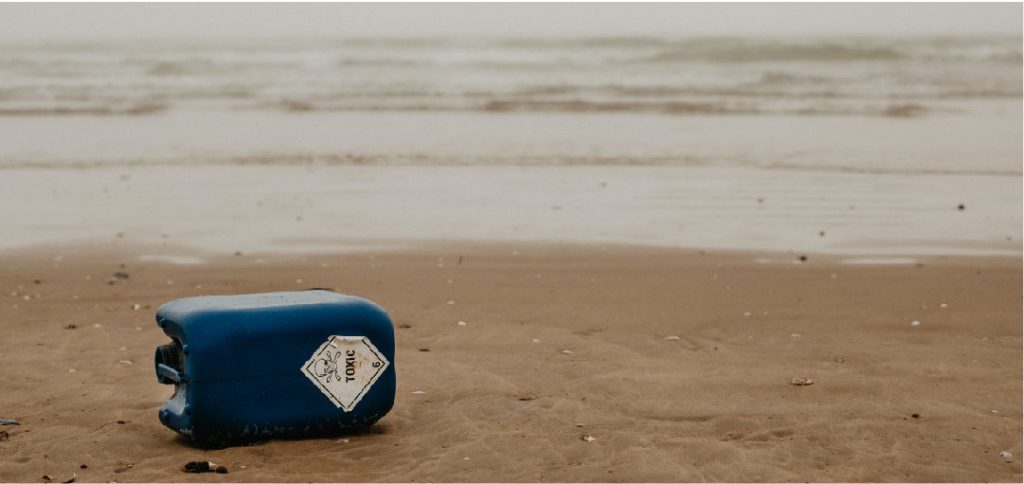
4. Irrelevance
Irrelevance occurs when brands make environmental-friendly claims that aren’t important to consumers searching for environmentally preferable products.
One common greenwashing example is when a cosmetic company tells their consumers how their natural line is CFC-free. CFC stands for chlorofluorocarbons.
Britannica defines CFCs as organic compounds composed of carbon, fluorine, and chlorine, which pose a significant environmental threat.
And guess what? They’ve long been banned under the Montreal Protocol, which means any product with CFCs is illegal.
Another example? In other countries, Triclosan had already been banned before the American FDA banned it. However, unlike other countries claiming its toxicity, FDA decided to stop the use of the products because the benefits don’t outweigh the risks much. You might see toothpaste products with a triclosan-free label – well, just know that all toothpaste brands should not contain triclosan.
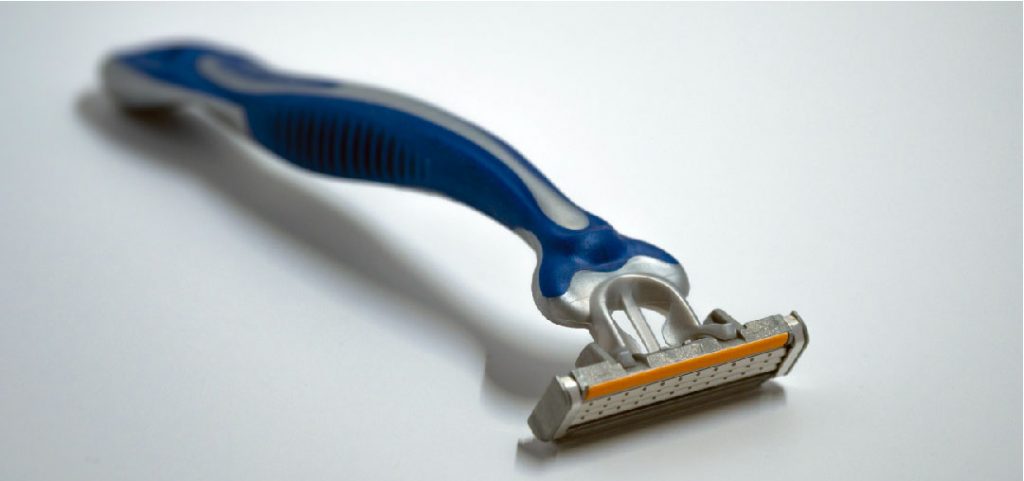
5. Lesser of Two Evils
A brand commits the sin of lesser of two evils when a product is touted as greener than other products in its category, but the category itself is questionable.
Why? Because as a whole, it’s not good for the environment.
If you had to choose between disposable razors and refillable razors, which would you choose?
The more “sustainable” choice is obviously refillable razors, but here’s the thing: in the end, it’s only the lesser of two evils. Even if you maximize the use of the handle, it doesn’t mean you prevent the razor heads from hitting the dumpster and filling the landfill, right?

6. Data Manipulation
Data manipulation is perhaps one of the rarely-committed seven sins. According to a study, it only happens in less than 1% of the cases, but it’s still worth knowing about.
This occurs when some brands advertise their goods through complete lies about their environmental performance. These are environmental claims that are blatantly false simply because they’re too good to be true.
You’ll often see examples of these from cosmetic ads in fashion magazines. It turned out that most superiority claims were rated as false, whereas scientific claims were categorized as vague or lacking key details.

7. Misleading Claims
Worshipping false labels are seen in companies falsely implying that their products have a third-party endorsement or certification. Some of them even entertain bogus certification labels.
One of the most efficient ways to avoid purchasing products guilty of this greenwashing sin is to conduct due diligence. Some of the reputable eco-labels and certifications are USDA Certified Organic, Non-GMO Project Verified, and Cruelty-Free.
Aside from false labels, some advertisers slyly use “green jargon” that can put customers on the wrong track. An example is labeling a product “eco-preferred”. This might trick unknowing customers into purchasing the product. But to be clear, eco-preferred doesn’t mean the product is certified.

How Sustainable Companies Can Avoid Greenwashing
Some green companies might argue that the seven sins are too restricting. However, the best strategy for avoiding greenwashing isn’t to wait for the perfect product. Instead, it’s to rely on credible science and maintain honesty and transparency when marketing your brand.
Be Fully Transparent About Your Commitments
The first step is to identify all of your product’s impacts on the environment across its entire lifespan.
Then, you can map out how your business will transition over the course of three to five years. Be open and honest with your consumers about your goals. This simple move can help you earn their trust while holding your brand accountable.
In fact, 94% of consumers choose to stick with completely transparent brands, and 89% of shoppers are willing to give transparent companies another chance even after a negative experience.
Who’s doing this right? Garnier. They use authenticity and honesty to earn their consumer’s trust as they work on “leading the sustainability in the mass market.”
Garnier unveiled their Green Beauty campaign at a digital press conference and laid out all their plans, which extends all the way through 2025. Their main goals are reducing the use of plastic and improving their recycling efforts.

Get The Proper Credentials
You shouldn’t use terms like “recyclable”, “eco-friendly,” or “sustainable” if they aren’t proven. However, since most of these terms aren’t regulated, these contribute to heaps of greenwashing incidents.
Therefore, it’s critical to get independent third-party approval of your claims. Faking it can hurt your brand. If you believe in your product, then there shouldn’t be any problem reaching out to certification-giving bodies.
Some companies resort to using green colors or meadows to denote sustainability, but this won’t do much for your marketing. Environmentally-conscious individuals might abandon you altogether. Try to get certifications from the following organizations instead:
Who’s doing this right? A lot of sustainable companies! You can check out these green directories to see which brands are accredited:

Connect Sustainability to Your Brand
Eco-conscious brands do their best to reduce their carbon footprint. Not only are they helping their environment, but they are also doing a great job at marketing their brand.
However, a more long-term method that allows you to continuously hit two birds with one stone (figuratively, of course) is to make your brand sustainable. Modern consumers consisting of Gen Z and millennials, are huge green shoppers.
Understand the importance of establishing a positive image with their target audience by taking a stand on issues that concern them—it’s rewarding for both your moral sense and the business you’re running.
Who’s doing this right? Sephora. Sephora initiated their Clean at Sephora campaign with a tagline, “The beauty you want, minus the ingredients you might not.”
Sephora developed a high-priority chemicals list, including those ingredients their customers have informed them about and other known controversial chemicals. Environmental and health concerns have led them to reduce the use of these chemicals.

Make Sustainability a Business-Wide Initiative
Business-wide integration is the hallmark of a reliable green marketing strategy. When planning a green campaign, you need to think about the entire production cycle from start to finish.
It’s nearly impossible to redesign your entire process overnight, but that shouldn’t stop you from injecting a bit of green initiative into your business. As mentioned earlier, you can still avoid greenwashing by being completely transparent with your customers and including them in your journey to better your approach.
Who’s doing this right? Ethique. This NZ-based direct-to-consumer (DTC brand) is all about zero waste. From process to products to packaging, Ethique is 100% plastic-free.
They started with zero waste shampoo and conditioner and have expanded to face and body products. These products are delivered in compostable paperboard or bare!

Tell Stories About Your Green Efforts
If you’re starting your sustainability efforts and want to let the world know about the transition—you can do it without turning to greenwashing.
When telling your story, avoid distracting your customers by focusing on single issues. Approach the whole thing as a whole, and if you can’t quantify the environmental impact or benefit of your products, don’t make any claims. Instead, work on improving your brand’s environmental footprint. Modern consumers appreciate brands letting them be a part of their story.
Who’s doing this right? L’Occitane. L’Occitane hosted a webinar entitled “Cultivator of Change.” In it, they talked about the company’s continuous sustainability efforts.
Part of the webinar is an immersive tour of L’Occitane’s almond, verbena, and immortelle farms. It’s a great way to show the origin of their raw materials and process traceability. They also used the video to outline their environmental program—what a smart way to tell their story and engage their customers.
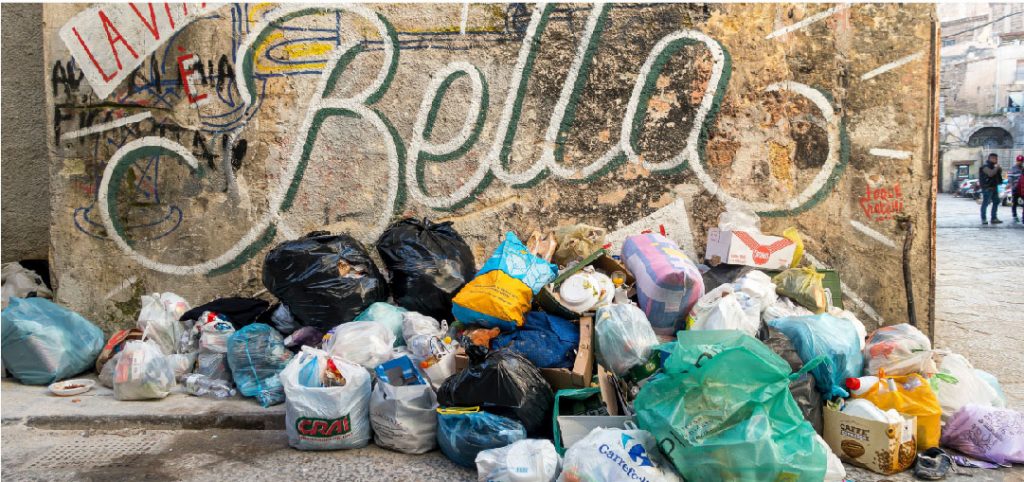
Avoid Doing These Things
Steering clear of the following greenwashing examples can help you build a more sustainable brand.
- Vague, meaningless language: Your customers will appreciate it if you personalize your message while staying truthful. Provide precise explanations for names and terms (e.g. ‘environmentally-friendly) you use when marketing your products.
- Having a green product but dirty company: Don’t brand your product as eco-friendly just because you’re using all-natural ingredients. Check to see if a single step in the manufacturing process contributes to environmental pollution.
- Using pretty pictures with no eco backing: Don’t use too much green, leaves, grass, forest animals in your design if your product isn’t really eco-friendly. These are classic greenwashing examples
- Replacing one bad product with another: Give the customer a chance to figure out which product is right for them by being completely transparent with your offer.
- Greening a product that’s still harmful: Don’t trick customers into thinking they’re making a ‘green’ choice by choosing an alternative product if it’s still harmful to the environment.
- Fake or meaningless “certifications”: Have third-party endorsement solidify your claim. Only choose accredited parties and make sure you don’t only do this for the final product but also for the entire product lifecycle.
- Making false claims: Make sure that each green marketing claim you put out is supported by science. Consider adding readily available evidence to your campaign.
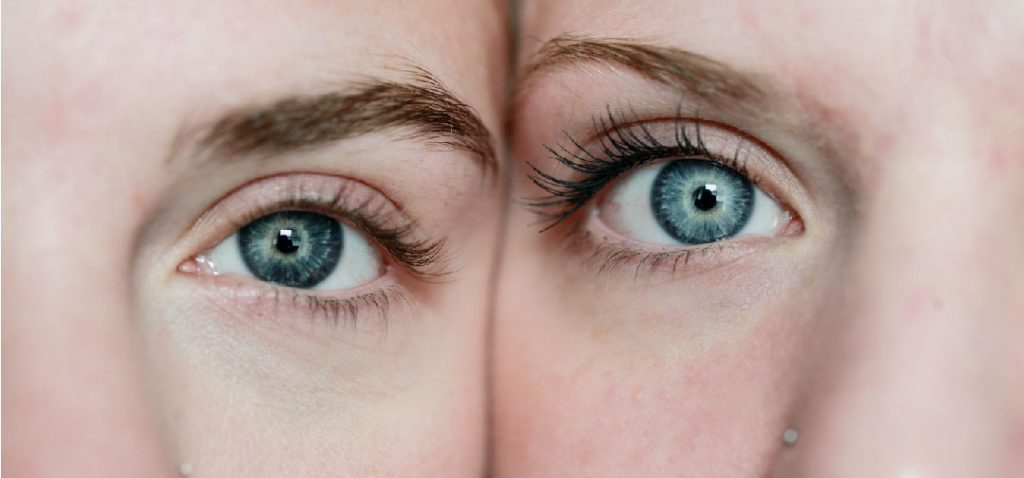
Greenwashing Mindset: Are European Cosmetics Safer Than Those Made in The US?
You’ve probably heard whispers about European cosmetics being safer than their US counterparts.
We’ll let you in on a secret: these claims hold little to no truth, and the perpetuation of these ideas encourage a greenwashing mindset. For the next couple of minutes, we’ll be debunking this myth.
Let’s lead off by saying both EU and US requirements on cosmetic regulation are in essence, the same.
So, how did this gossip start?
It’s true that the European Union prohibits all ingredients found to be harmful. However, it’s important to emphasize that this does not mean that the US uses some of these ingredients. In fact, there are imposed regulations around these substances—it’s just that the FDA doesn’t ban them completely.
To paint a clearer picture, the European Cosmetics Directive Annex II has 1,378 banned substances—with 80% of the mentioned ingredients never existing in a cosmetic product. Some of them are substances such as jet aircraft fuel, rat poison, pesticides, carbon monoxide, barbiturate drugs, methotrexate, etc.
To be clear: every cosmetic ingredient, whether it is used in cosmetics sold in the United States or the European Union, is subjected to rigorous scientific safety assessment. It’s safe to say that product quality and safety are reputable for both EU and US-made products.
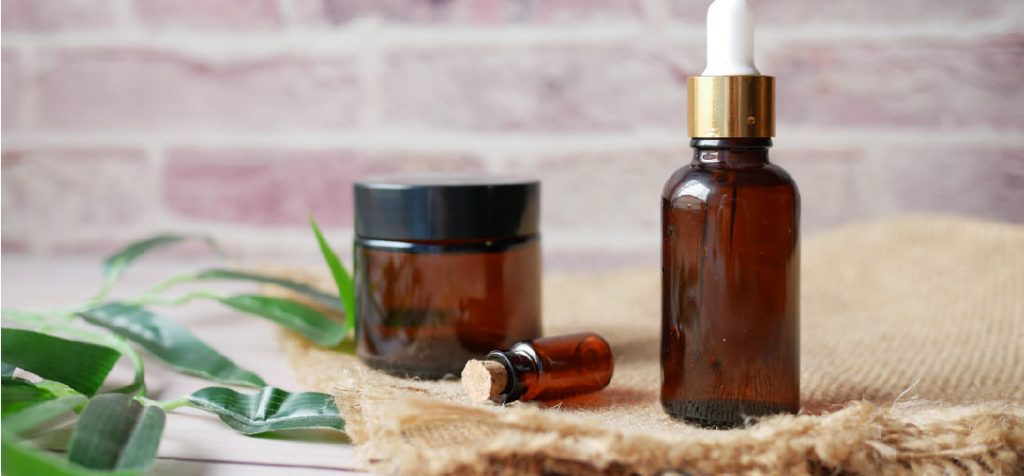
A Closer Look: 10 Ingredients Banned in Europe But Not in the US
Now that we’ve taken a deep-dive into what greenwashing is and how companies can avoid it, we’d like to take a look at a common beauty myth that includes several instances of greenwashing.
You may have seen press coverage sensationalizing the fact that Europe has so many more banned cosmetic ingredients than the US. It makes for a good story, but are these chemicals actually dangerous? The answer is nuanced.
Let’s dive in, see if you can spot our examples of greenwashing below.
1. Formaldehyde and Formaldehyde Releasers
Formaldehyde is a colorless astringent preservative that is known to be a significant carcinogen. It’s used in many resins, some cleaning chemicals, and many vintage furniture materials, in addition to several personal care products.
Our bodies naturally produce minute amounts of this chemical. Many cosmetic products contain straight formaldehyde to give them a longer, more stable shelf life, while other preservatives break down into formaldehyde over time or through different chemical processes. Formaldehyde releasing preservatives (FRPs) can include:
- Quaternium-15
- DMDM Hydantoin
- Imidazolidinyl Urea
- Diazolidinyl Urea
- Polyoxymethylene Urea
- Sodium Hydroxymthylglycinate
- 2-Bromo-2-Nitropropane-1
- Bronopol
- Glyoxal
Found In: You can find Formaldehyde and FRPs in nail polish or nail enamel, nail glue, eyelash glue, hair gel, hair-smoothing products, baby shampoo, body soap, body wash, and many color cosmetics. Further, some chemical processes, such as the application of heat, can contribute to the breakdown of the FRPs and hasten the process of creating formaldehyde gas.
Countries Banned: Formaldehyde is banned in Japan and Sweden for all toiletries and cosmetics. The EU has restricted it from use in personal care products, and the few exceptions have to be labeled appropriately. There are concentration restrictions in Canada.
Are they really dangerous? It’s very rare to find formaldehyde as such in cosmetics anymore, but preservatives that release formaldehyde when mixed with water are still present in many cosmetics and topical medications.
At appropriate levels, these preservatives are safe for use in cosmetics and don’t cause skin irritations. However, some people suffer from an allergic reaction to contact. Study findings show that formaldehyde allergy has occurred in about 8–9% of Americans over the past several decades.
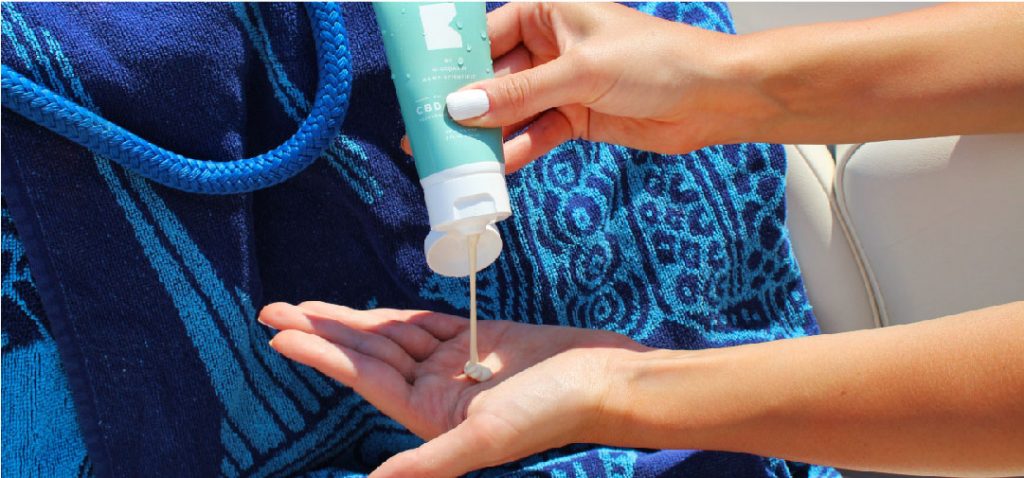
2. Oxybenzone and Chemical Fillers in Sunscreens
Oxybenzone goes by many names and acts as a UV blocker in most conventional sunscreen products. This product was approved in the late 1980s and is still regularly used now. While it’s not inherently dangerous to us, it can pose a threat to marine life.
Found In: Oxybenzone is found in most over-the-counter, nonprescription sunscreen products. You can also find this product in “tanning lotions” and other similar products.
Countries Banned: Nearly all countries with thriving coral reef populations have banned the use and sale of sunscreen with these ingredients. This includes Australia and other tropical countries.
Are they really dangerous? Oxybenzone and other sunblock fillers are at the receiving end of shade from environmentalists.
According to a study, this ingredient weakens corals by bleaching them. And under hotter conditions, the heat can exacerbate the outcome.
However, this claim is turning people away from more significant factors causing coral reefs ruin, such as:
- Climate changes
- Biological changes
- Water quality issues
These factors are the leading causes of significant destruction in the ocean.
Moreover, in most chemical fillers studies, researchers have used a large amount of the substance than what should be the realistic value.As an example, in the 2008 Danovaro study, the lowest concentration of pure sunscreen filter used was 0.99 parts per million of 4-MBC (enzacamene). Even though these concentrations sound fairly low, other coral experts note that they are much higher than most environments.
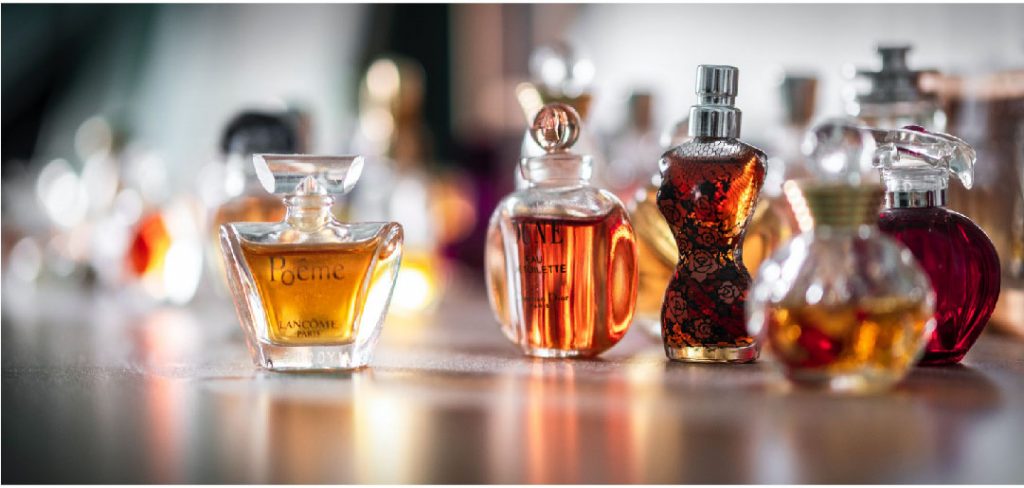
3. Synthetic Fragrances or Parfum
Fragrance can be proprietary. In many cases, the words “fragrance” or “perfume” can be used to represent a wide range of volatile organic compounds (VOCs).
Found In: Synthetic perfumes are found in nearly anything scented unless it specifically lists essential oils or floral extracts for their scents. Deodorant, shampoo, lotions, sunscreen, toothpaste, even things labeled as “unscented” can be chock full of artificial aromas created from laboratory formulas.
Countries Banned: The EU and Canada both have severe restrictions on what can be included under the umbrella term “fragrance.”
Are they really dangerous? According to American Academy of Dermatology, aromatic fragrances are one of the leading causes of allergic reactions, with over 5.7 million cases per year.
However, most fragrances don’t pose serious health risks. Just keep in mind that they can be irritating for people with sensitive skin or skin conditions. This doesn’t mean that people with skin problems will automatically react negatively to fragrances, and people without compromised skin barrier could still get allergic reactions from them.

4. Parabens
Parabens are a family of chemicals that have been banned in many countries as a whole, rather than individually. These five primary parabens are isopropulparaben, isobutylparaben, phenylparaben, benzulparabe, and pentylparaben. Others aren’t banned but are very strictly regulated in the EU.
Found In: Most commonly, you can find parabens in lotions, moisturizers, foundation, concealer, and other similar cosmetic products.
Countries Banned: The EU has banned the primary five parabens and heavily restricts the rest of them. The FDA has stated that they see no evidence to support the claims of harm.
Are they really dangerous? In 1998, a study discovered that parabens weakly increased estrogen in rats. A rise in the female sex hormones might mean parabens can cause breast cancer and reproductive disorders. However, the negative bias surrounding parabens only started when the Darbe Group detected parabens in 20 various human breast tumors in 2004.
However, there’s a lot of loopholes in this study, such as the lack of a control group used. Researchers did find parabens in tumor tissue, but they didn’t verify their finding by checking if the same was true for normal, non-cancerous tissues.
And here’s another thing: parabens in cosmetics are weak. A study was conducted on volunteers who applied 2% butylparaben-containing cream to their whole bodies for a week. Despite the cream containing much more paraben than regular products (suggested amount is less than 0.3%), the butylparaben had no short-term effect on thyroid and reproductive hormone levels.

5. Phthalates
Phthalates are widely used, often hidden, or listed under less disturbing names to avoid detection and cause much damage over time. The primary phthalates found in cosmetics are DEP, DBO, DEHP, or “fragrance.” These chemicals most commonly act as a method of forming plastic-type products and to help the longevity of scented products.
Found In: Many nail polishes, enamels, and glues contain one form of phthalates or another. You can also find them in lotions and body sprays where the scent is supposed to last a while. Further, you can find them in eyelash glue and costume/prosthetic glue.
Countries Banned: The EU has banned the use of phthalates in cosmetics. It classifies them as reproductive toxicants.
Are they really dangerous? Numerous studies have associated phthalates with various mental or physical issues such as asthma, breast cancer, obesity, behavioral issues, attention-deficit hyperactivity disorder, fertility issues, etc.
However, several government-sponsored scientific agencies and regulatory bodies have thoroughly reviewed and investigated phthalates. They’ve concluded that phthalates used in commercial products pose no side effects at typical exposure levels.
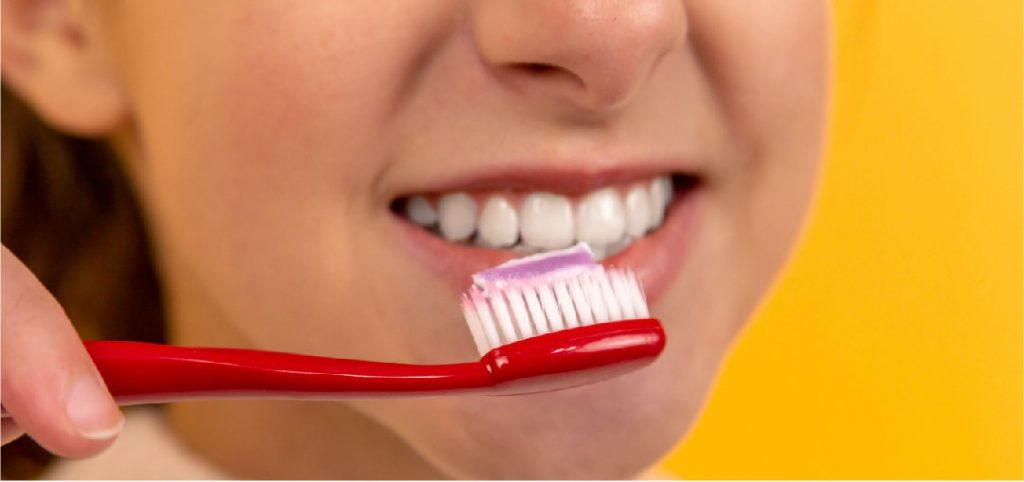
6. Triclosan
Triclosan is an antimicrobial used in many different applications in concentrations up to 0.3% for cosmetics. Another name to look for is triclocarban. It’s not quite the same but closely related and creates the same symptoms.
Found In: You will discover TSC and TCC primarily in things that are labeled as antibacterial. Soaps, detergents, toothpaste, mouthwashes, deodorants, and shaving products are the primary culprits of these chemicals in our daily lives. There have been no tests run on the dangers of inhaling these chemicals through things like spray deodorants.
Countries Banned: Triclosan is heavily restricted in Canada and Japan. Triclocarban is restricted in the EU. The EPA and Environment Canada Domestic Substance List classify Triclosan and triclocarban as toxic and consider it a pesticide.
Are they really dangerous? Antibacterial Triclosan is considered dangerous because it could lead to contact dermatitis, skin irritation, and allergic reaction exacerbation, especially in children. A significant percentage of exposure is through the skin or mouth lining.
But the main reason the FDA banned Triclosan isn’t that it’s toxic; there just aren’t enough benefits to justify the possible dangers. If using plain soap and running water works just as well, there’s no sense risking acquiring the side effects.
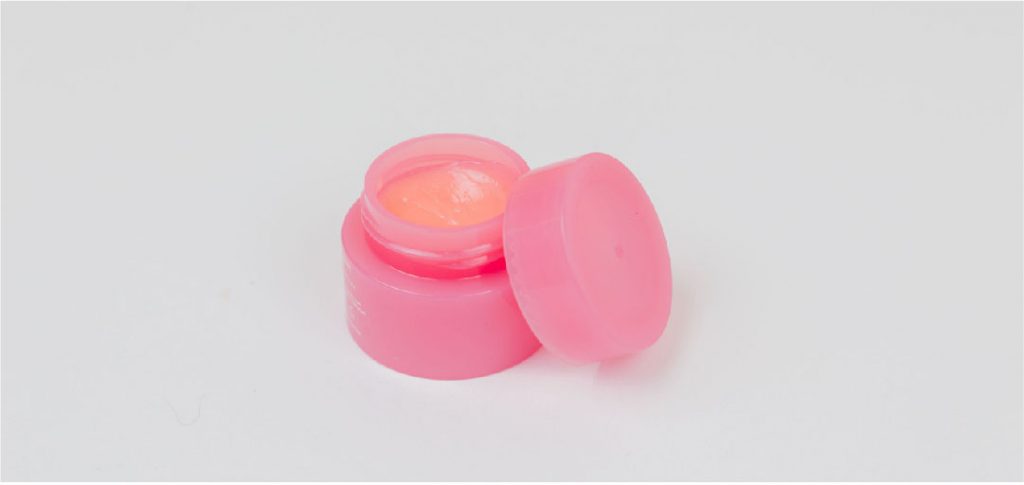
7. Petroleum
Petroleum is the umbrella term for many products of the same family. The petroleum jelly we use for lotions, hydration, and other cosmetic purposes is from the same products that create plastic products and automotive fuel. The refinery process of petroleum renders it virtually harmless when it is done to a high standard.
Found In: Primarily, you’ll find petroleum in lotions and moisturizing cosmetics. You’ll want to scour the label for terms like petrolatum, petroleum jelly, paraffin oil, mineral oil, or white petrolatum. The last of these, the white petrolatum, is fully refined and safe.
Petroleum-based products are often used for tattoo care moisturizers, as it creates a barrier on the skin that repels microbes that may cause infection at the tattoo site. Further, 95% of all chemicals used under the term “fragrance” are petroleum-derived.
Countries Banned: In the UE, the full certification and refining history must be available to prove that the product no longer contains carcinogenic impurities. However, the US has no such regulations.
Are they really dangerous? Some mineral oil varieties can be carcinogenic. However, more often than not, manufacturers use non-toxic by-products in their goods. For instance, castor beans contain ricin (a deadly poison) and castor oil (a known moisturizer and laxative).
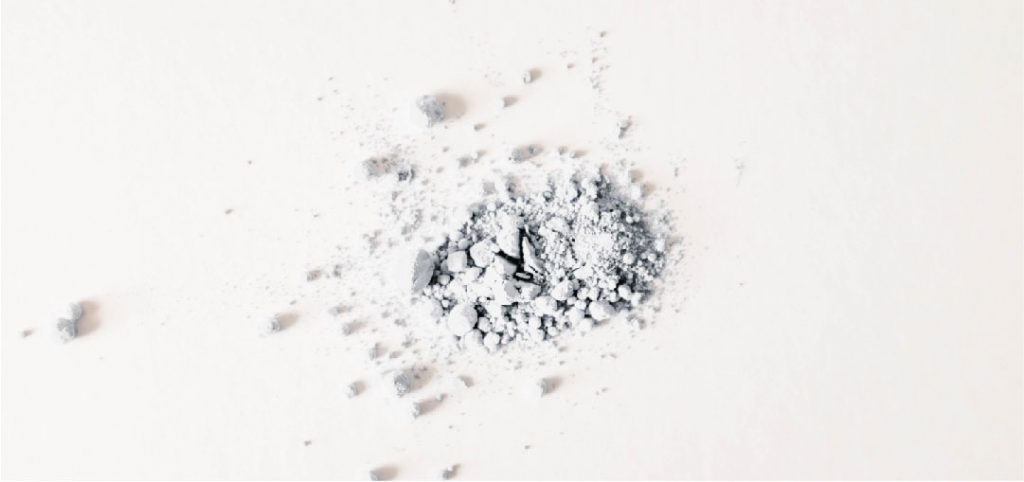
8. Talc
Used in many products as a moisture regulator, talc is a common mined mineral used in cosmetics, hygiene, and many other trades as an unsticking agent. It is a chalky textured substance that reduces friction and other complications due to excess moisture.
Found In: You can find talc in baby powder, powdered eye shadow, foundation, bronzer, and other compressed powder makeup options. Further, you can often find it in feminine hygiene products and medicated body powders to reduce moisture and friction chafing. You can also find talc used in food products and animal feed, and other things requiring an anti-sticking agent. The contaminant, asbestos, has several varieties, some more toxic than others.
Countries Banned: Talc is often found to contain asbestos and has been banned in the EU and several Asian countries. The only way to test if the talc powder used in your product contains asbestos is to have each container tested for contaminants. However, even with restrictions, ⅔ of all baby powder distributed in Korea is still tested for asbestos after being labeled as asbestos-free.
Are they really dangerous? Some people have skin reactions from talc. Talcum is also linked to ovarian cancer, endometrial cancer, and mesothelioma, even if there’s no sufficient evidence to prove this claim.
The jury’s still out on this one. However, American Cancer Society identified asbestos-contaminated talc fibers as a potential work hazard for miners and other workers. Still, it shouldn’t be an issue for cosmetic production.
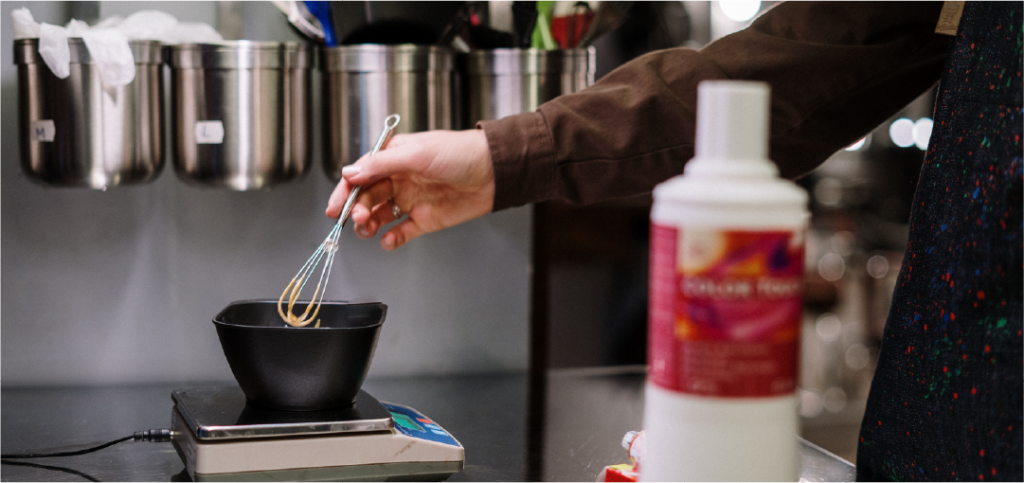
9. PPD
PPD is the shorthand for p-phenylenediamine. PPDs form a family of chemicals used as developing agents in chemical dyes, photography developers, rubber, and polymers such as kevlar.
Found In: PPDs are found in oxidative hair dyes, or hair dyes that use oxygen to trigger chemical reactions to change the hair color. You can find them under a variety of other names:
- P-phenylenediamine
- Paraphenylenediamine
- 4-aminoaniline
- 1, 4-benzenediamine
- P-diaminobenzene
- 1, 4- diaminobenzene
- 1, 4-phenylene diamine
Countries Banned: In the EU, chemical concentration is highly restricted while banned in Canadian cosmetics. There are no restrictions on concentration or use in the US.
Are they really dangerous? Contact irritation has been well-documented for PPDs. In addition to this, these chemicals have been linked to organ system toxicity, skin sensitization, eye irritation and tearing, asthma, convulsions, tremors, renal failure, and coma.
However, these adverse effects only stem from acute exposure to high concentrations.
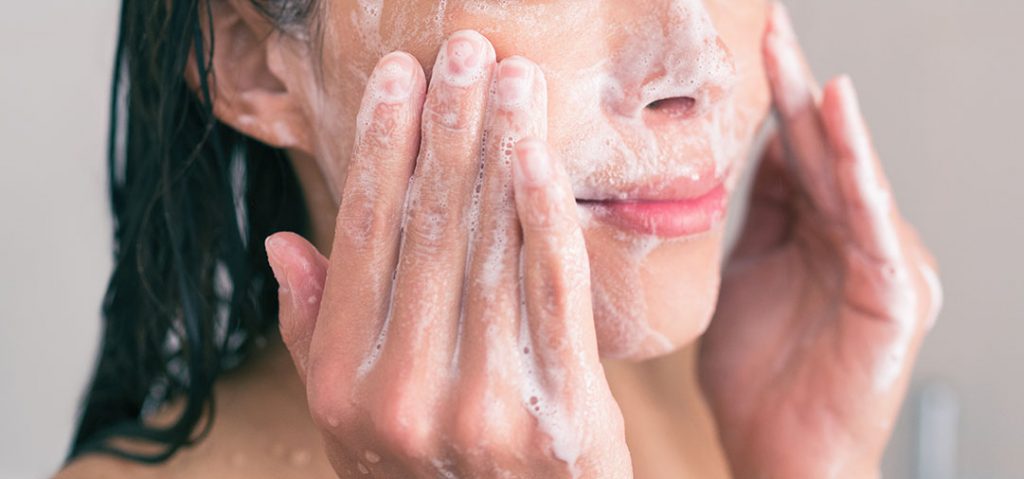
10. Hydroquinone
This chemical is known for its lightening effects when used as a topical cream. It is most commonly a by-product of synthetic vitamin E. Products with this ingredient are most aggressively marketed toward women of color and those with uneven pigment in their skin.
Found In: Called both hydroquinone and tocopheryl acetate, consumers can find these products in lotions, facial creams, skin lighteners, cleansers, conditioners, and nail products intended to lighten or even skin tones.
Countries Banned: This chemical is entirely banned from cosmetics in the EU. However, it is relatively easy to find or have products containing this chemical from international companies. In Canada, it is heavily restricted. In the US, the Cosmetic Ingredients Review Panel acknowledges that prolonged use is unsafe, but as the FDA has no regulatory authority over cosmetic ingredients, its use is not restricted.
Are they really dangerous? There have been some reports of hydroquinone causing a condition called ochronosis, which is marked by papules and bluish-black pigmentation. However, this is extremely rare. Moreover, it could only occur after using the product long-term because hydroquinone creams shouldn’t be used for over five months.
Lastly, this study indicates hydroquinone in creams haven’t shown any signs of toxicity for humans.
Takeaway
Framing sustainability as part of your brand is more than just a marketing tactic. As brand owners, it’s exciting to be a vital part of the movement and bring optimism to your customers.
Greenwashing often goes hand in hand with beauty myths. For this reason, it’s important to be well-informed. Conduct your research to ensure that what you know isn’t based on hearsays, but rather, hard facts.
Pair ingenuity with the knowledge you learn from this piece and build a sustainable practice to create products that can positively impact the environment and your customers in the long run.

